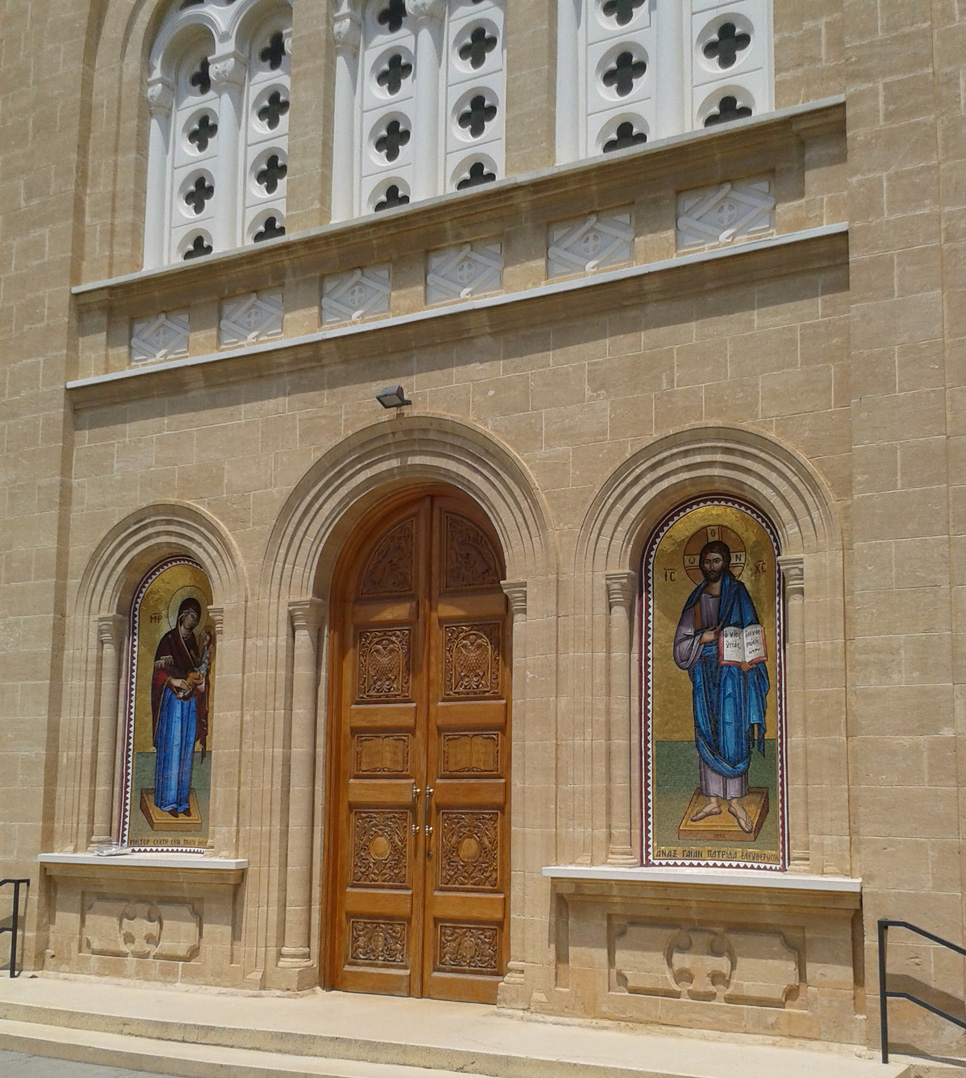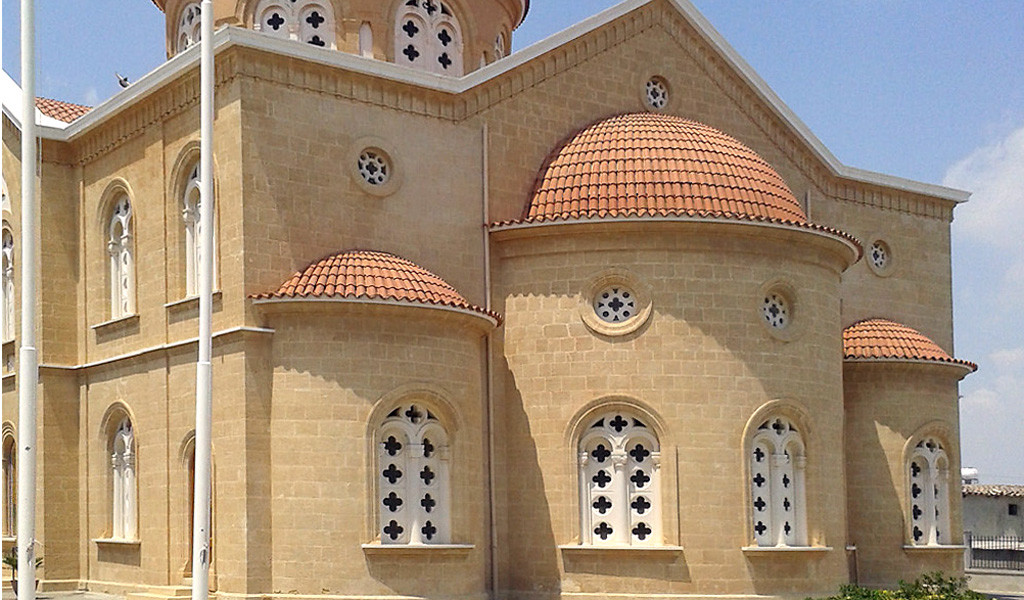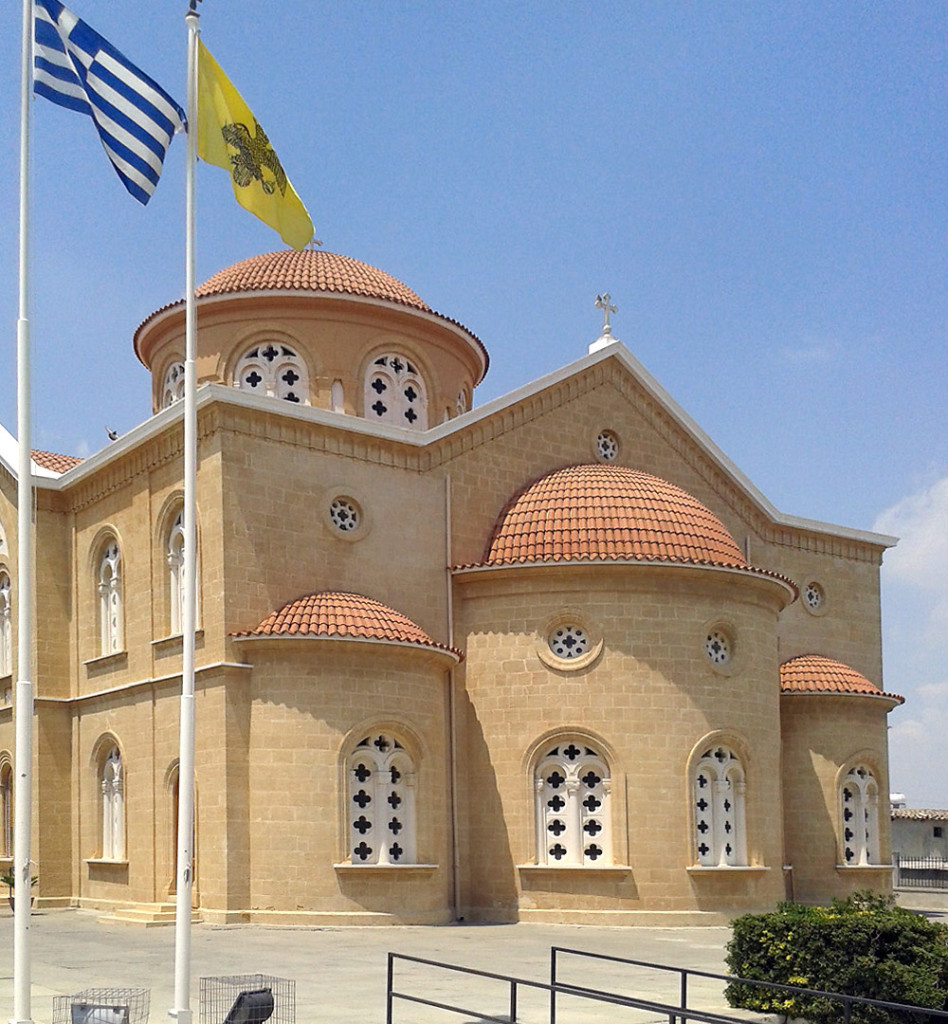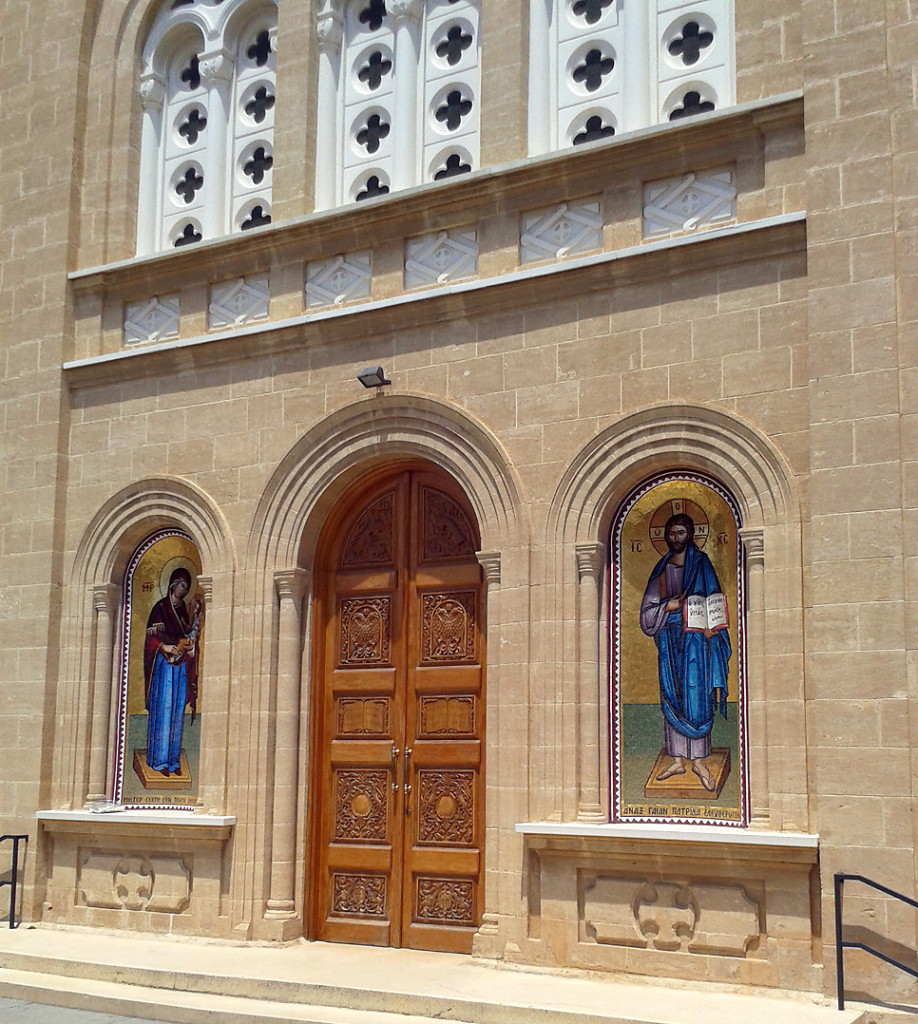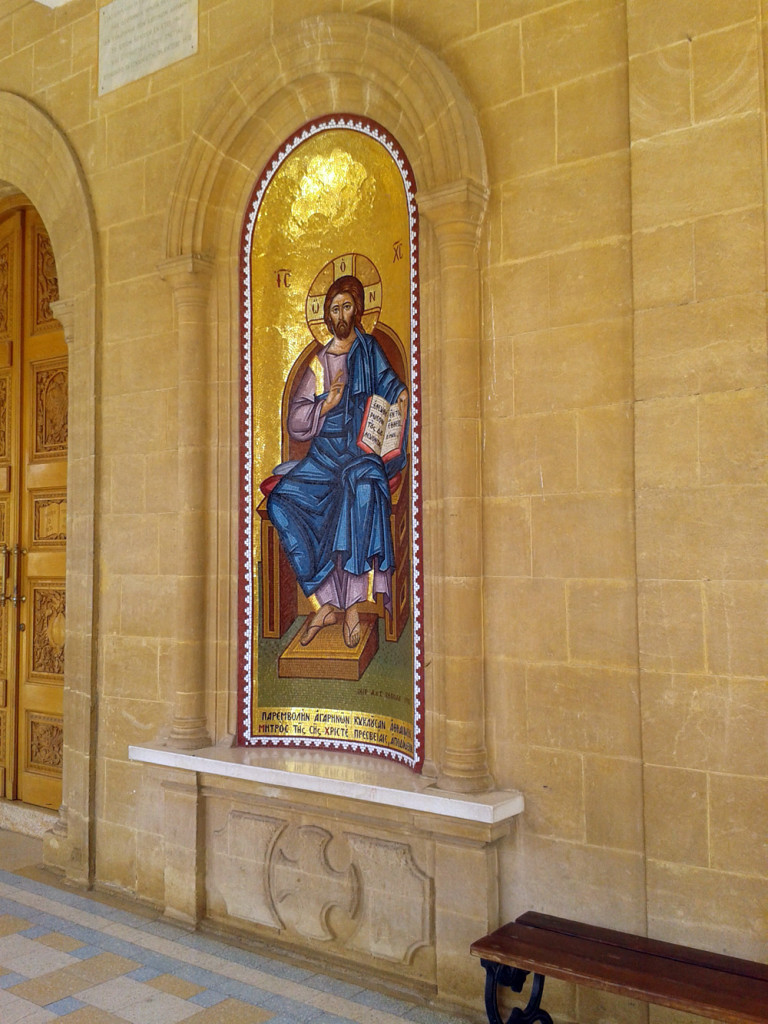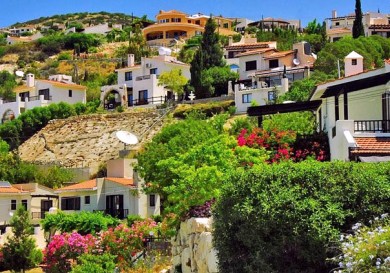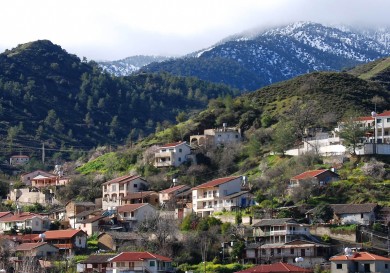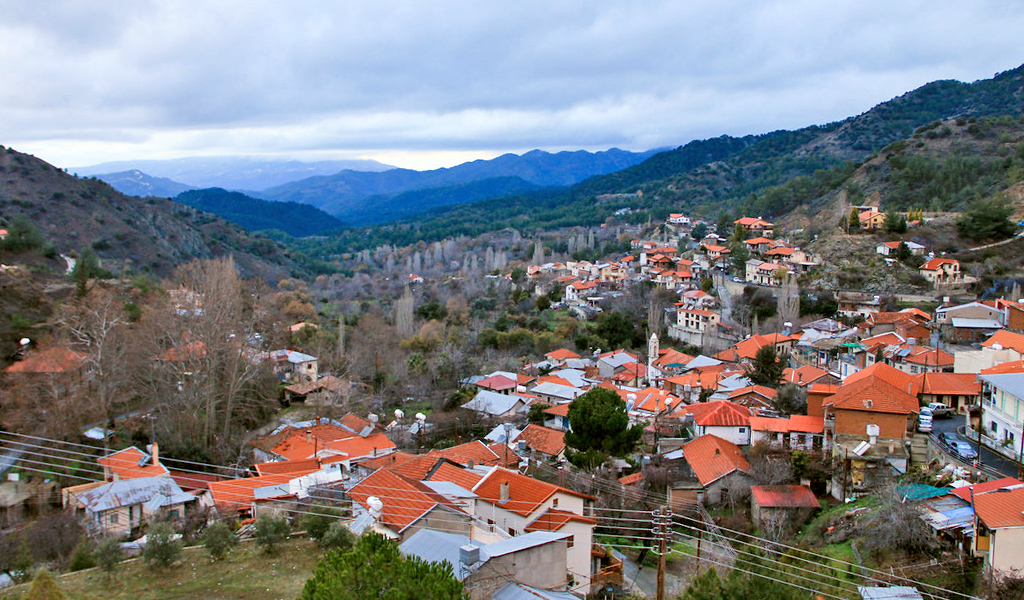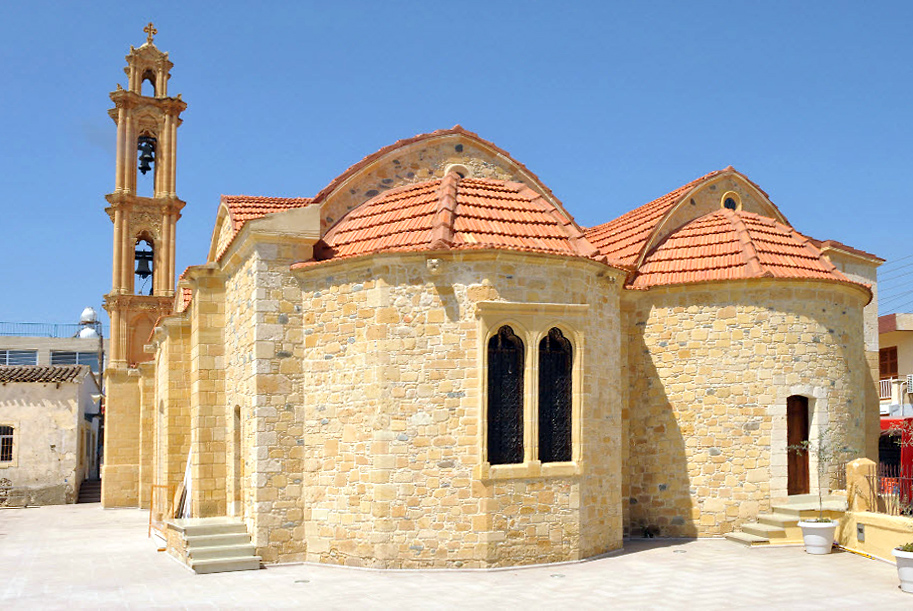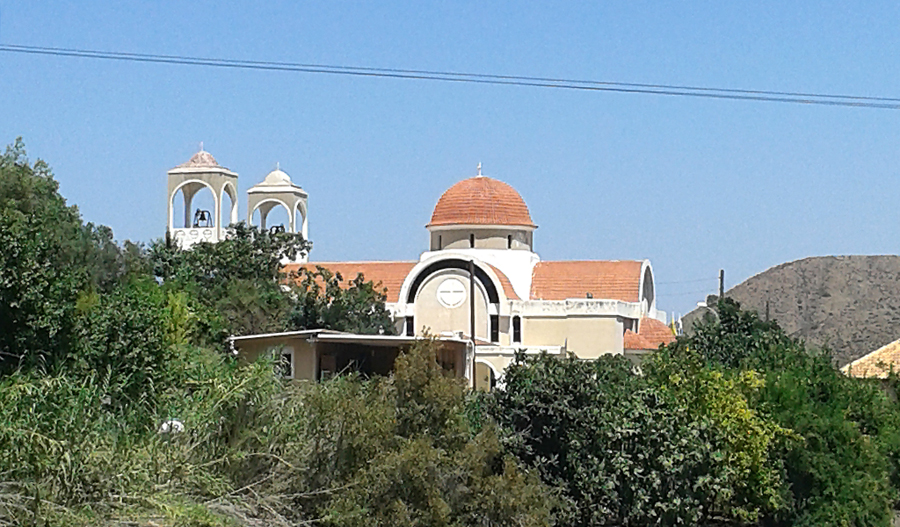Many people, even those who do not consider themselves as believers, know about St. Spiridon shoes or heard something about it. But if you dig deeper, there are few of those who answer the question “Who was St. Spiridon?” and “Why was he canonized?” Despite the fact that the saint’s relics are now in Corfu island in Greece, his earthly journey and turning to God were connected with Cyprus. Unfortunately, Assia village (Ασσία), where according to the historical evidence, St. Spiridon was born and there is also a church in his honor, is now in the occupied territory. The church is in poor condition, and nothing has been preserved in the village that resembled the life of the saint. But one of the churches of Athienu village located nearby, on the onoccupied side, kept his shoes.
The history and religion in Athienu
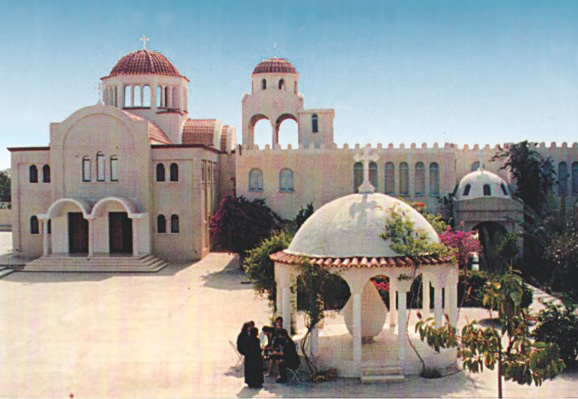 Athienu village is located 20 km from Larnaca. If we move from the roundabout on the Larnaca – Ayia Napa route, at the first exit we need to turn left. This will be a direct route to Athienu. The hilly terrain with sparse vegetation is initially discouraging. In my head, thoughts about the turbulent historical past of the island, lost forests and the events of 1974, come. Now Athienu is in the vicinity of the dividing line between the island today. The fox running across the road interrupts the flow of thoughts. Ironically, it happened right next to the sign “Caution: sheep”.
Athienu village is located 20 km from Larnaca. If we move from the roundabout on the Larnaca – Ayia Napa route, at the first exit we need to turn left. This will be a direct route to Athienu. The hilly terrain with sparse vegetation is initially discouraging. In my head, thoughts about the turbulent historical past of the island, lost forests and the events of 1974, come. Now Athienu is in the vicinity of the dividing line between the island today. The fox running across the road interrupts the flow of thoughts. Ironically, it happened right next to the sign “Caution: sheep”.
On the way you can see St. John’s the Baptist chapel on a hill and the signs that tell about the nearby Monastery of the Holy Epiphany and Transfiguration. Inquisitive minds, and perhaps other forces did not allow us to pass by. So I found myself in a place called Avdellero. The convent of the Transfiguration of the Lord was built here recently. The first stone of its foundation was laid in 1979. Now the scope and scale of the monastery are very impressive. As it turned out, on the 6th of August (the day of my visit) it was the celebratory day of the monastery – the Transfiguration, and all the parishioners were treated with sweets and coffee.
After leaving the monastery, I very quickly got to Athienu village. It should be noted that according to Cypriot standards the settlement is large enough and in contrast to the mountain villages there is a sense of space and scale. The outskirts of the settlement can even be described as the “elite buildings”. Modern architecture and well-maintained sites are pleasing to our eyes. In the main square of Athienu, at a short distance from each other, there are three churches. The oldest of them is the Church of the Blessed Virgin Mary, which was built in 1711. Almost next to it is a modern temple, also dedicated to the Blessed Virgin Mary. A little further to the left of the square you can see the church of St. George built in 1880. St.Spiridon’s shoes are stored in the new Blessed Virgin Mary’s temple. Oddly enough, the temple is open to the parishioners only on Sunday, and to wear the shoes, you need to make aspecial request to the church’s priest.
The shabby Saint shoes
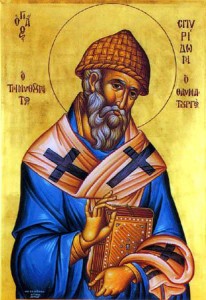 As far as we know, during his life, St. Spiridon was a virtuous and responsive person. Never did he refuse a request to the needy, helping those who were in difficult financial situations. From 324 to 361 A.D., St. Spiridon served as the bishop of Trimithunta. Hence the addition to his name – Tremithus.
As far as we know, during his life, St. Spiridon was a virtuous and responsive person. Never did he refuse a request to the needy, helping those who were in difficult financial situations. From 324 to 361 A.D., St. Spiridon served as the bishop of Trimithunta. Hence the addition to his name – Tremithus.
Keeping all the commandments, St. Spiridon was selflessly doing good, strengthening the inhabitants of the city in their faith and piety; many came to Christianity due to his power of persuasion. Before his death, St. Spiridon received notice from God of his up-coming death and accepted it with humility. Later, when Cyprus was captured by Mohammedans, his relics were transferred first to Constantinople and then to Corfu island, where they are located till now. There is the tradition that after his death, he travels around the island and helps people in need, and his shoes are worn out constantly. Therefore sometimes the clergymen of the church where the relics of the saint are located, change his shoes and give the old ones to the other churches where Orthodox believers worship. Thus it becomes clear that there are many pairs of shoes in various holy temples of the world.
If after visiting the temple you will have a deeper desire to learn about the history of the village and Cyprus in general, you can visit the nearby Municipal Museum. The modern building and exhibition interior will pleasantly surprise you. Not every city can have such a museum! It is represented as a permanent exposition dedicated to the cultural and spiritual heritage of the island and the current exhibition of contemporary art and creativity.
Visitors who wish, can visit the archaeological parks and excavations in Mallura town, which is located very close to Athienu.
The best kleftiko is in Athienu!
And at the end of the trip you absolutely must try the local kleftiko. This is the reason due to which guests from Nicosia, Larnaca and nearby villages come here. Especially on weekends during summer time, the village turns into a real tourist center. The most eminent “meat places” are considered to be the taverns “Harula” and “Papaioannou.” There, an amazing, juicy lamb dish is served with local pourgouri porridge, potatoes and salad. It would seem like nothing special – just fresh and flavorful meat and side dishes, but the result is a true celebration for meat lovers. Even those who aren’t fond of meat dishes, will not remain indifferent. And any Cypriot will tell you that in Athienu is the best kleftiko in Cyprus.
So, be ready to discover new interesting historical facts, new places, new people and new taste sensations. Perhaps understanding the world is the real meaning of life!




